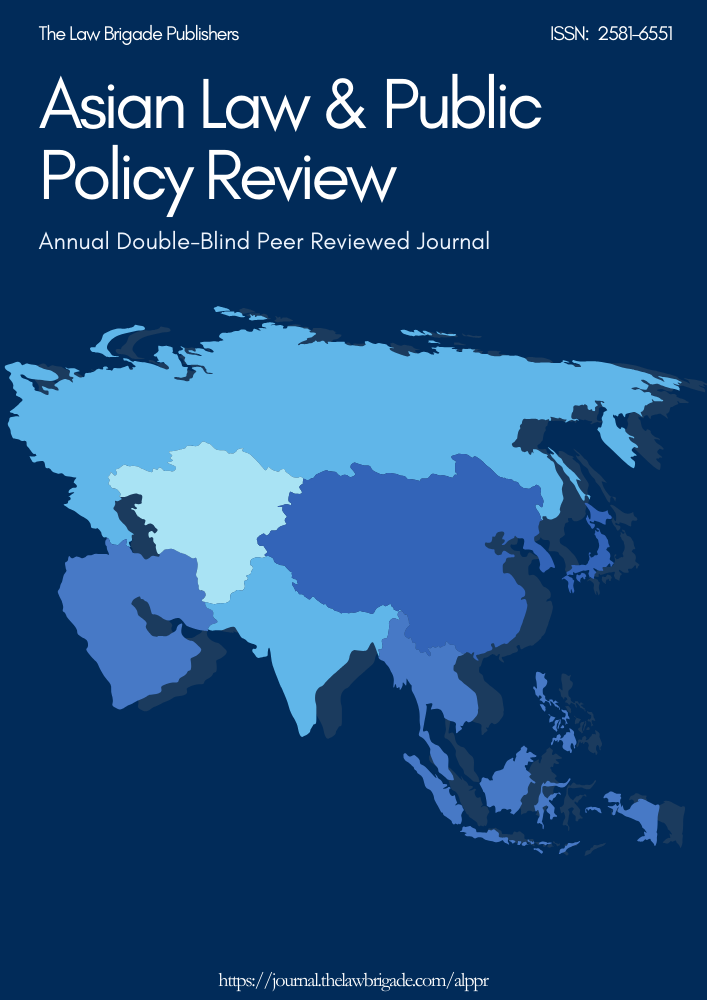India’s Refugee Policy: Issues and Concerns
Keywords:
refugee, international relations, human rightsAbstract
The Global refugee regime has its origins in the Inter-War years. “In the aftermath of the First
World War, the League of Nations High Commissioner for Refugees (LNHCR) did not
represent a formal treaty-based regime but tried to develop ad hoc solutions to human
displacement.1
In contrast, the post-Second World War era has led to the development of a
formal, treaty-based regime with a surveillance mechanism. The contemporary regime is based
on, the 1951 Convention on the Status of Refugees, which defines who qualifies as a refugee
and the rights to which refugees are entitled.2 According to the 1951 Convention, refugees are
persons who, “owing to a well-founded fear of persecution on the grounds of race, religion,
nationality, or membership of a social group or political opinion, are outside the country of
their nationality”. They are people who flee their country because of human rights abuses or
conflict. They are therefore in need of what is referred to as ‘international protection’. Given
that their own state is unable or unwilling to ensure their access to their basic rights, they need
to seek them from another state or from the wider international community. The preamble of
the 1951 Refugee Convention puts emphasis on international cooperation to provide base for
an effective refugee regime. The Convention encompasses the rules, norms, principles, and
decision-making procedures that govern states’ responses to refugees.
Downloads
Downloads
Published
Issue
Section
License

This work is licensed under a Creative Commons Attribution-NonCommercial-ShareAlike 4.0 International License.
License Terms
Ownership and Licensing:
Authors of research papers submitted to any journal published by The Law Brigade Publishers retain the copyright of their work while granting the journal specific rights. Authors maintain ownership of the copyright and grant the journal the right of first publication. Simultaneously, authors agree to license their research papers under the Creative Commons Attribution-ShareAlike 4.0 International (CC BY-SA 4.0) License.
License Permissions:
Under the CC BY-SA 4.0 License, others are permitted to share and adapt the work, even for commercial purposes, provided that appropriate attribution is given to the authors, and acknowledgment is made of the initial publication by The Law Brigade Publishers. This license encourages the broad dissemination and reuse of research papers while ensuring that the original work is properly credited.
Additional Distribution Arrangements:
Authors are free to enter into separate, non-exclusive contractual arrangements for distributing the published version of the work (e.g., posting it to institutional repositories or publishing it in books), provided that the original publication by The Law Brigade Publishers is acknowledged.
Online Posting:
Authors are encouraged to share their work online (e.g., in institutional repositories or on personal websites) both prior to submission and after publication. This practice can facilitate productive exchanges and increase the visibility and citation of the work.
Responsibility and Liability:
Authors are responsible for ensuring that their submitted research papers do not infringe on the copyright, privacy, or other rights of third parties. The Law Brigade Publishers disclaims any liability for any copyright infringement or violation of third-party rights within the submitted research papers.


